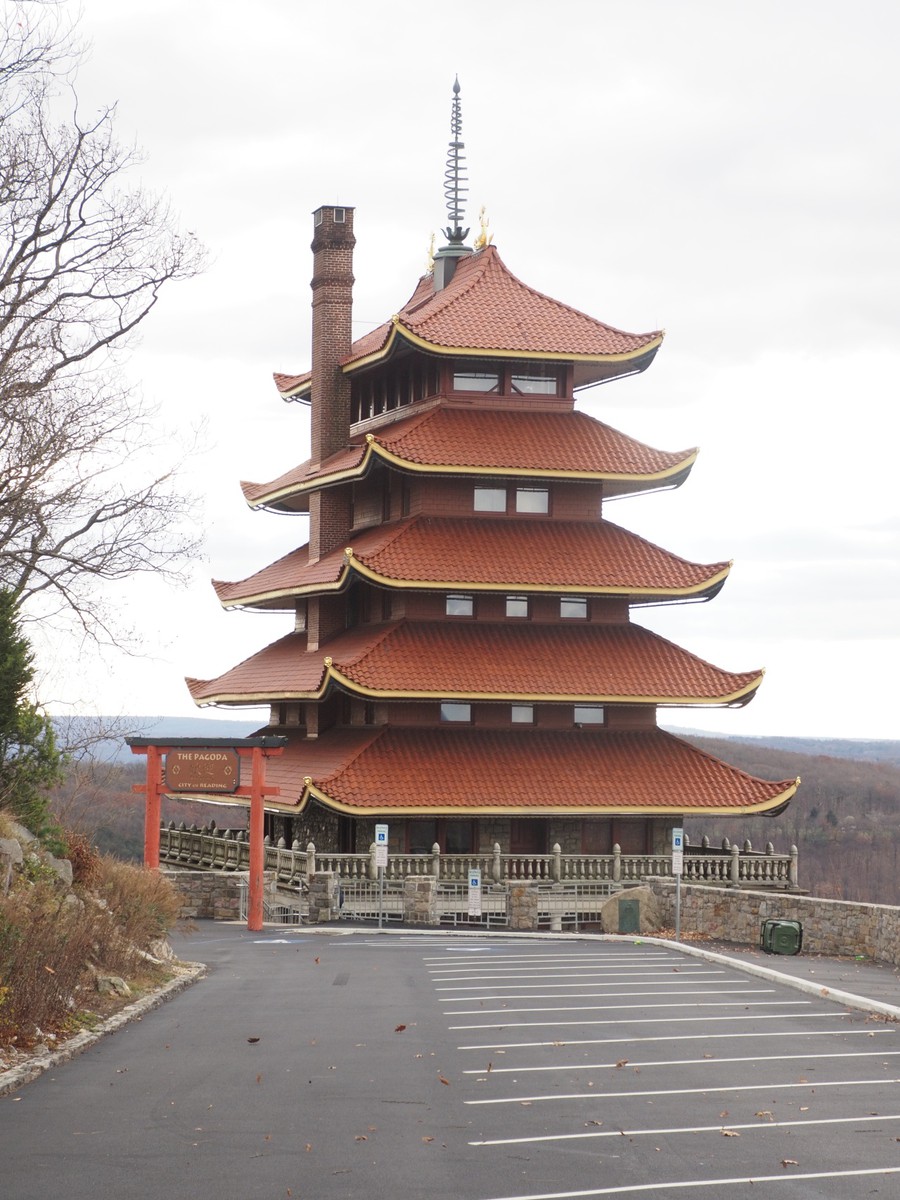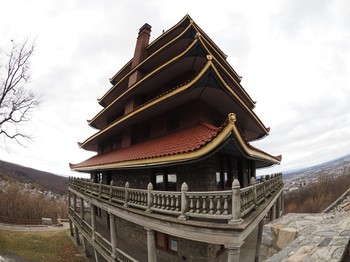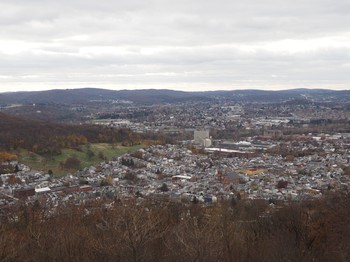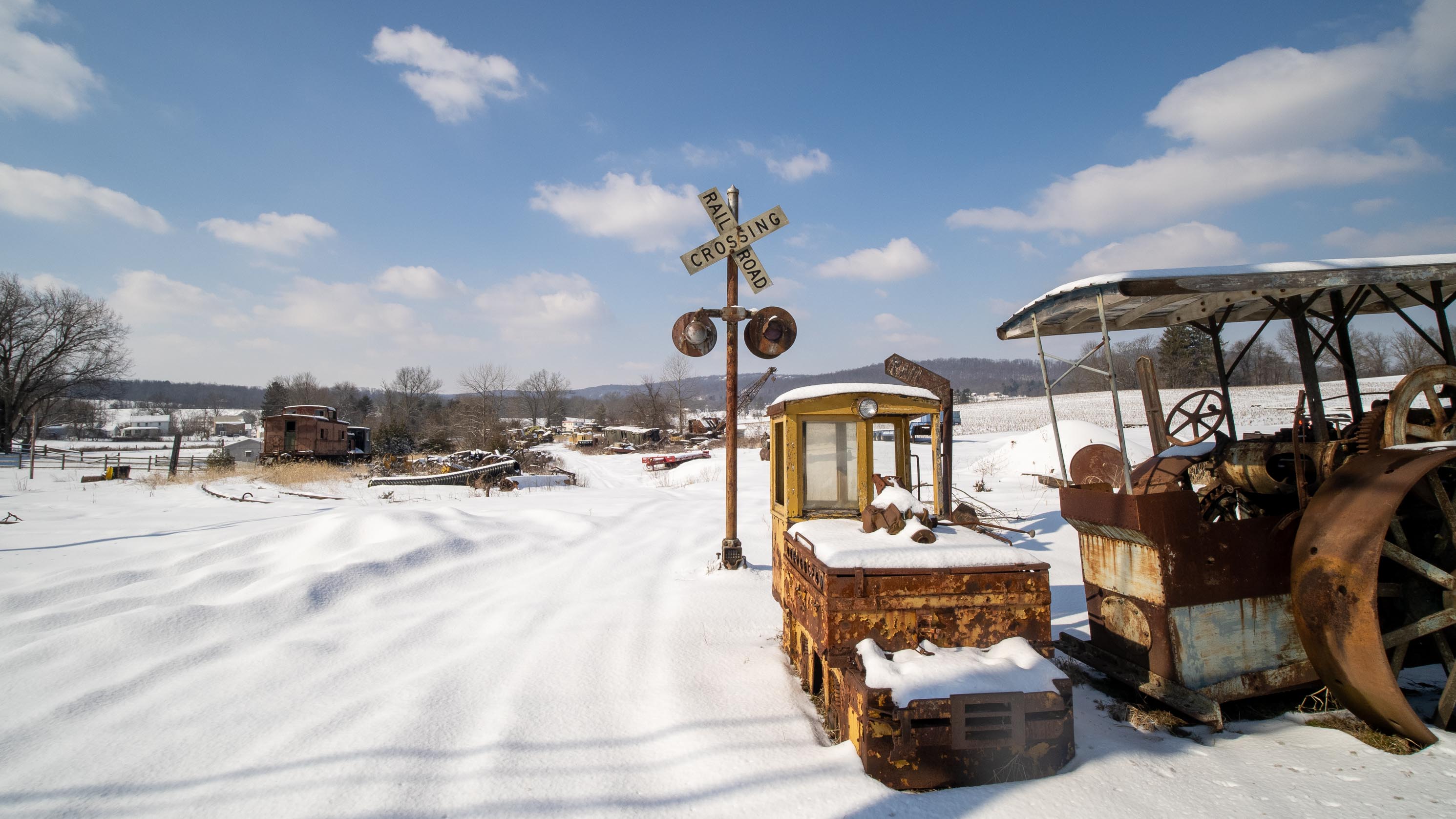The Reading Pagoda
✍️ • 🕑 • Series: Attractions of Pennsylvania • Tags: Eastern Pennsylvania • mining history • faux architecture • Places: The Reading Pagoda
I always come home for the holidays, except for when I don’t.
But, for Thanksgiving I was home. The fam and I paid a brief, windy visit to the Reading Pagoda.

Once upon a time, there was a businessman and politician named William Abbott Witman Sr., who lived in the city of Reading, Pennsylvania. (Today, the fourth largest city in the state!)
Born to a master mechanic, young Witman soon began business ventures such as a coal yard (shared with his brother), construction firm, and eventually a quarry – the latter made him some enemies. Witman bought 10 acres of land on the southern tip of Mt. Penn, and the scar resulting from his quarrying was visible for all to see.
It was just not a good look, and it incensed the city residents. This was also not so good for Witman, who had political machinations, and wanted support from voters. Witman decided to instead use the land for different kind of a business venture.

A friend showed Witman a photograph of Nagoya Castle in Japan, or according to other accounts, of an unspecified location in the Philippines. To replace the quarry, he commissioned a similar structure, which cost between $33,000 to $50,000 depending on the account. (Or, say about 1.6 million dollars of 2022 money.)
And on August 10, 1906, he put out a splashy announcement in the local paper about how Reading would now have a Japanese Pagoda, one of many mountain resorts coming to the area.
The pagoda was constructed by the team of James and Charles Matz. Some claim that it was based on a replica of Emperor Shogun’s palace, while others claim it was based on a mysterious photograph of unknowable origin, perhaps to obfuscate its Japanese-ness during the ugly heights of anti-Japanese sentiment.
But even if the architecture’s authenticity is questioned, some of the furnishings are genuine. Witman apparently went so far as to purchase a 1789 gong from the Shozenji temple. I guess that’s how you run up such a large bill…
By 1908, the pagoda was complete. Witman applied for a liquor license, but was denied one probably because he upset everybody so much. So, he ended up selling the property in 1910 to bank director Jonathan Mould, who was apparently trying to keep the bank from losing assets. After one year, Mould re-sold the property to the City of Reading for the sum of one dollar.

Witman, meanwhile, continued with his political career, which was interesting and storied in its own right.
Dude ran for mayor four times, won a city council seat by a single vote, and was at one point convicted of bilking residents’ with padded garbage collection fees & awarding himself and his brother contracts for the coalyard. In reference to other city politicians he is said to have quipped, “They’re all liars and crooks, I’m not a liar.”

The pagoda is now a symbol of the city. As such, it is cherished and maintained, at the tune of well over a million dollars. During the ugly heights of anti-Japanese sentiment, there were claims of its Filipino, Korean, or even Chinese origin.
Currently, the space is closed due to COVID restrictions and an “abundance of caution.” In the meantime, the mayor and city council are imagining future plans for the site, including structural upgrades and increasing accessibility. You can still visit, of course, but the parking lot is fenced off.
Sources
- “100th anniversary of city’s ownership of Pagoda celebrated”, The Reading Eagle April 21, 2011 Issue. Accessed online.
- “The Story of the Pagoda”, The Historical Review of Berks County Summer 1998 Issue. Accessed Online.
- Cassidy, Clement J., “The Political Cereer of William A. Witman Sr.”, The Historical Review of Berks County Spring 1958 Issue. Accessed online.
- Lynch, Michelle Nicholl, “The Pagoda”, The Historical Review of Berks County Spring 1995 Issue. Accessed online.
- Smith, Susan Miers , “The Pagoda: What you should know about Reading’s iconic landmark”, The Reading Eagle September 2, 2021 Issue. Accessed online.
This post was part of a series:
Thanks for reading!
If you enjoyed this post, you might enjoy these 5 similar posts:
- 2021-03-01 —Geigertown Central Railroad Museum
- 2021-11-26 —Descent Into The Valley of the Gnomes
- 2021-12-03 —Return to Normalcy, or A Visit To The Warren G. Harding Home
- 2022-02-09 —Elote Under The 7 Train, or My New York City Dream
- 2024-12-27 —I Visited The NYC Christmas Lights THAT Paul McCartney LOVED - The Dyker Heights Christmas Lights
